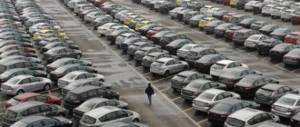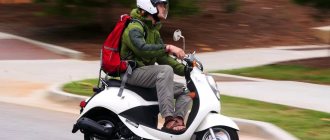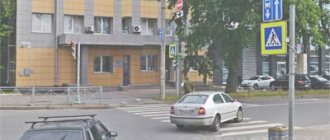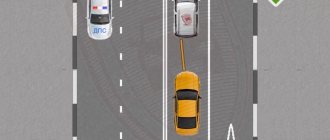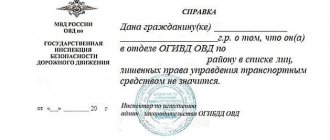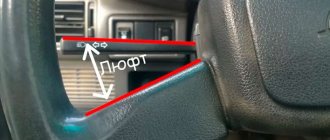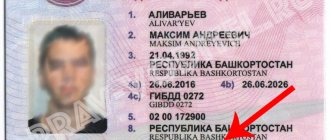AutoYurait.rf / Registration and accounting
Back
Published: November 22, 2018
Reading time: 16 min
0
856
Classification of vehicles on the territory of the Russian Federation is carried out in accordance with the Decision of the Customs Union Commission dated December 09, 2011 N 877 “On the adoption of the technical regulations of the Customs Union “On the safety of wheeled vehicles” (TR CU 018/2011). This regulation provides for the division of cars into categories, which have a letter designation: L, M, N, O.
- L - motor vehicles Mopeds, motorbikes, mokikis
- Motorcycles, scooters, tricycles
- Quadricycles
- Cars
Category "Lx"
Category “L” is usually divided according to the following criteria:
- “L1” is a two-wheeled vehicle that does not exceed 50 kilometers per hour. When an internal combustion engine is installed, its volume should not be more than 50 cm3. And when the electric motor is installed, its volume should not be more than 4 kW;
- "L2" is a three-wheeled vehicle that accelerates to no more than 50 kilometers per hour. With an installed internal combustion engine of no more than 50 cm3 or an electric motor of no more than 4 kW. These categories include mopeds and motorbikes. It's quite easy to differentiate between them;
- “L3” - vehicles with a maximum permitted speed of over 50 kilometers per hour with any engine installed;
- “L4” is a vehicle with wheels symmetrical to the transport plane. The maximum speed is more than 50 kilometers per hour, and the engine capacity is over 50 cm3;
- "L5" is a symmetrical vehicle that accelerates over 50 kilometers per hour. The engine capacity is more than 50 cm3;
- “L6” is a four-wheeled vehicle weighing no more than 350 kilograms. The mass of the battery is not taken into account. Transport should not exceed a speed of 50 kilometers per hour. In this case, the power of the internal combustion engine should not be more than 50 cm3, and the power of the electric motor should not be more than 4 kW;
- “L7” – other four-wheeled vehicles not included in the L6 category, weighing no more than 400 kilograms. For cargo vehicles 550 kilograms without battery. The engine capacity should not be more than 15 kW.
L - motor vehicles
This category includes:
Mopeds, motorbikes, mokikis
L1 - two-wheeled vehicles whose maximum design speed does not exceed < 50 km/h and are characterized by:
- in the case of an internal combustion engine - with an engine displacement not exceeding < 50 cubic meters. cm
- in the case of an electric motor - rated maximum power in continuous load mode, not exceeding < 4 kW .
L2 - three-wheeled vehicles with any wheel arrangement, the maximum design speed of which does not exceed < 50 km/h , and characterized by:
- in the case of an internal combustion engine with forced ignition - an engine displacement not exceeding < 50 cc. cm
- in the case of another type of internal combustion engine - a maximum effective power not exceeding < 4 kW
- in the case of an electric motor - rated maximum power in continuous load mode, not exceeding < 4 kW .
Motorcycles, scooters, tricycles
L3 or classic motorcycles are two-wheeled vehicles whose engine displacement (in the case of an internal combustion engine) exceeds > 50 cc. cm (or) the maximum design speed (with any engine) exceeds > 50 km/h.
L4 - three-wheeled vehicles with wheels asymmetrical with respect to the median longitudinal plane, the engine displacement of which (in the case of an internal combustion engine) exceeds > 50 cc. cm and/or the maximum design speed (with any engine) exceeds > 50 km/h . Essentially, these are motorcycles with a sidecar.
More on the topic: Driving categories in the Russian Federation
L5 or tricycles are three-wheeled vehicles with wheels symmetrical with respect to the median longitudinal plane of the vehicle, the engine displacement of which (in the case of an internal combustion engine) exceeds > 50 cc. cm and/or the maximum design speed (with any engine) exceeds > 50 km/h .
Quadricycles
These are four-wheeled vehicles, divided depending on engine size and weight into:
L6 - the unladen mass of such ATVs does not exceed <350 kg excluding the mass of batteries (in the case of an electric vehicle), the maximum design speed does not exceed <50 km/h , and characterized by:
- in the case of an internal combustion engine with forced ignition - an engine displacement not exceeding < 50 cc. cm
- in the case of another type of internal combustion engine - maximum effective engine power not exceeding < 4 kW
- in the case of an electric motor - the rated maximum power of the motor in continuous load mode, not exceeding < 4
L7 - ATVs other than those described in category L6, i.e. more than 50 cubic meters cm. Their unladen mass does not exceed <400 kg (550 kg for vehicles intended for the transport of goods) excluding the mass of batteries (in the case of an electric vehicle) and the maximum effective engine power does not exceed <15 kW.
Category "Mx"
Category M includes vehicles that allow the transportation of citizens. They are separated using the following:
- “M1” - the number of passenger seats is no more than eight. Usually this category is in greatest demand among citizens;
- “M2” - the number of passenger seats is more than 8, and the total weight does not exceed 5 tons;
- “M3” - the number of passenger seats is more than 8, and the total weight exceeds 5 tons.
The “M1” category includes ordinary passenger cars, which almost every family owns. The categories “M2” and “M3” designate trolleybuses or buses, which are divided depending on their weight. If it is less than 5 tone, then “M2”, and if more, then “M3”.
M - vehicles for transporting passengers
All vehicles in this category have at least four wheels
Cars
M1 - vehicles used for the carriage of passengers and having, in addition to the driver's seat, no more than eight seats .
Buses, trolleybuses, specialized passenger vehicles and their chassis
M2 or minibuses are vehicles used for the transport of passengers, having, in addition to the driver's seat, more than eight seats , and whose technically permissible maximum mass does not exceed < 5 tons.
More on the topic: When do you need a category for a passenger trailer?
M3 - vehicles used for the transport of passengers, having, in addition to the driver's seat, more than eight seats , the technically permissible maximum weight of which exceeds > 5 tons. In fact, these are all city and intercity buses.
Vehicles of categories M2 and M3 with a capacity of no more than 22 passengers in addition to the driver are divided into class A , intended for the carriage of standing and seated passengers, and class B , intended for the carriage of seated passengers only.
Vehicles of categories M2 and M3 with a capacity of more than 22 passengers in addition to the driver are divided into class I , having a dedicated area for standing passengers and providing a quick change of passengers, class II , intended for the carriage of predominantly seated passengers and having the ability to transport standing passengers in the aisle and ( or) in an area not exceeding the area of a double passenger seat, and class III , intended for the carriage of exclusively seated passengers.
Correspondence of vehicle categories and rights
Drivers often try to find out what category of license they need to have to drive a particular vehicle.
- to drive a passenger vehicle of category "M1" you will need the designation "B". Citizens need this category of license to drive a car every day. It is important to know that the “M1” category does not include trucks that fall under the “B” designation on their license;
- You can drive vehicles of categories “M2” and “M3” with a driver’s license with the designation “D”;
- vehicles falling under category “N1” can be driven with the common designation “B” on the driver’s license;
- to operate cars “N2” and “N3” you need category “C”;
- driving a car with a trailer weighing no more than 750 kilograms is possible with the usual category “B”;
- and for the categories “O1”, “O2”, “O3” the designations “E” to “B”, “E” to “C” and “E” to “D” on the license are suitable;
- To drive a vehicle of category “L1” - “L2”, you need category “M” on your driver’s license;
- You can drive a vehicle of category “L3” - “L5” with the designation “A”;
- You can legally drive a vehicle “L6” - “L7” if you own category “B1”.
When choosing your vehicle, be sure to check whether you have the ability to drive it. You can do this by looking at the designations that are on your driver’s license. If your category does not allow you to drive a certain vehicle, then its operation in the future may lead to the deprivation of your driver's license. Given such a serious punishment, we need to take this moment extremely seriously. Remember, you can also receive a punishment if you transfer your vehicle to a citizen whose category of rights does not allow him to drive this car.
Mopeds, motorbikes, mokikis
Vehicles equipped with two wheels, the maximum permissible speed of which cannot be higher than 50 km/h, belong to category L1. These vehicles may differ in technical characteristics, expressed in the following parameters:
- if there is an internal combustion engine, its total internal volume should not exceed 50 cm3;
- If there is an electric motor, the maximum power in continuous load modes should not exceed 4 kW.
Vehicles equipped with three wheels and with a permitted maximum speed of 50 km/h. belong to the L2 category. The following restrictive characteristics are established for such vehicles:
- if an internal combustion engine is installed, its volume should not be more than 50 cm3;
- if an electric motor is installed, its maximum power should not exceed 4 kW;
- ICEs of other types are also limited to a power parameter of 4 kW.
In the case of three-wheeled vehicles, their location on the frame of the device does not matter.
